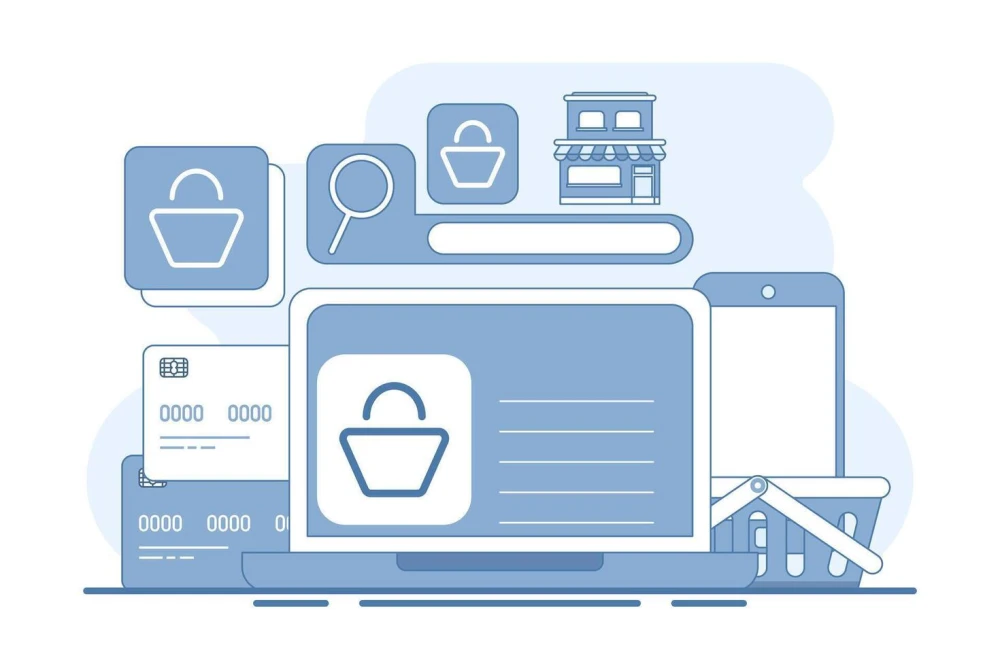As online shopping becomes increasingly important, understanding how consumer behavior is evolving—and how to leverage these changes to grow your business—is essential. If you’ve been wondering what the latest trends in digital commerce are and how personalization can transform your marketing campaigns, read our latest blog post.
From customized messaging based on consumer behavior to strategic data collection, digital commerce offers endless opportunities for growth. In this article, we’ll explore key trends and strategies to help you better understand your customers and build long-term relationships with them.
1. Trends in Digital Shopping
Online shopping continues to rise in popularity, largely due to the ease and speed with which consumers can make purchases. According to recent data, nearly 33% of consumers shop online every week, and 25% plan to increase their online shopping volume over the next 12 months. This trend is especially strong among younger consumers, particularly those aged 25 to 34, who are leading the way in the digital space. Having a well-optimized and user-friendly website is essential to staying competitive in this landscape.
Direct Purchases and Deeper Customer Engagement
One of the major challenges retailers face is encouraging customers to shop directly through their websites, bypassing intermediaries like large online marketplaces. This strategy allows retailers to maintain higher profit margins and build more direct relationships with their customers, resulting in increased loyalty and engagement. The key to success lies in personalizing the user experience and offering added value for direct purchases.
2. The Power of Personalization
Personalization is becoming increasingly important in digital marketing. Today’s consumers expect customized offers tailored to their needs and interests. Leveraging user data can significantly improve AI-driven marketing campaigns, enabling the creation of hyper-personalized messages that stand out in a sea of generic content.
A great example of effective data use is the Wunderkind Identity Network, a vast data platform that allows marketers to precisely target consumers and create messaging tailored to each individual. This strategy helps brands outpace their competitors and develop deeper relationships with customers, ultimately leading to higher conversion rates and stronger retention.
3. Adapting to Consumer Preferences
Different demographic groups have varying preferences when it comes to communication channels.
Email remains the most effective channel for personalized offers, especially among older generations. Marketers aiming to reach older consumers should continue using email as a core part of their campaigns.
However, among younger demographics—particularly Millennials and Gen Z—SMS communication is gaining traction. To remain competitive, marketers must embrace this shift and adapt their communication strategies to keep pace with evolving trends. By combining email and SMS messaging, brands can achieve greater reach and effectiveness in delivering personalized offers.
Effective Advertising
Beyond communication channels, advertising that is tailored to consumers’ interests and behaviors has proven most effective. Visually appealing ads that blend into the user experience without disrupting it can significantly boost engagement. Creating dynamic ads that adjust in real-time to consumer behavior can yield far better results than traditional static advertisements.
4. First-Party Data Collection
With third-party cookies being phased out, retailers are turning to first-party data collection. This data—voluntarily shared by consumers—is becoming essential for crafting personalized, high-converting offers.
One key strategy is collecting data through various on-site interactions, such as pop-up newsletter signups, surveys, or personalized quizzes. When you understand what motivates your customers and what they’re looking for, you can craft offers that not only grab their attention but also convert into real sales.
5. Navigating the Digital Marketplace
Key Advertising Channels
YouTube and Facebook remain top platforms for influencing consumer behavior and purchasing decisions. Video content, which continues to grow in popularity on these platforms, offers brands a powerful way to showcase products in a visually engaging and informative format. By utilizing these channels, marketers can inspire customers to explore and purchase their products.
In Serbia, social media platforms like Facebook and Instagram continue to dominate digital advertising, while YouTube and TikTok are becoming increasingly popular, especially among younger audiences—opening up new opportunities for video-based marketing.
Balancing Marketplaces and Direct Sales
While online marketplaces such as Amazon (and local e-commerce platforms in Serbia) offer convenience and security for consumers, direct sales via brand websites still play a crucial role. Direct sales enable brands to retain more profit and collect valuable consumer behavior data that can inform future marketing strategies.
Striking the right balance between using large marketplaces and encouraging direct website purchases can be challenging, but with the right strategy, retailers can succeed on both fronts. Focusing on user experience, exclusive offers, and personalized communication are key factors in balancing these channels effectively.
Logistics and Delivery Development
One of the critical factors driving the growth of digital shopping in Serbia is the quality of delivery services, especially in smaller cities and rural areas. Brands that invest in fast, free shipping with real-time tracking options can significantly enhance the customer experience and build lasting loyalty.
E-Commerce and Legal Framework in Serbia
With the implementation of new data protection regulations (like the GDPR in the EU), Serbia is expected to tighten its own rules regarding data collection and usage. Retailers who adapt quickly to these laws and communicate transparently with customers about how their data is used will gain greater trust.
Growth of Local E-Commerce Platforms
Retailers who partner with local platforms can more easily reach a broader customer base and build trust through familiar domestic channels.
